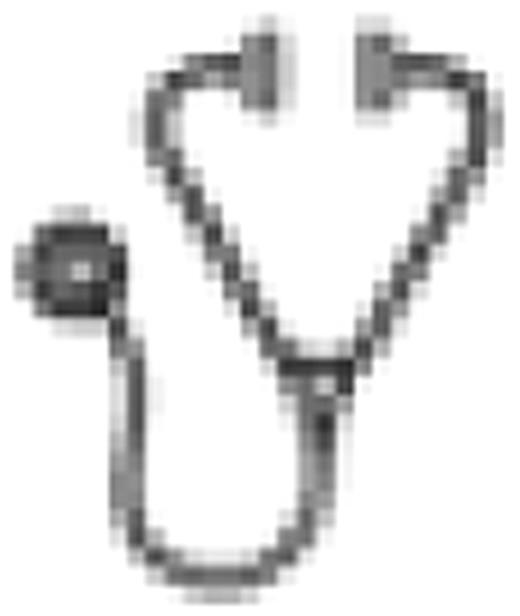Abstract
Abstract 3326
Data from rodents suggest that thalidomide (T) is active in chronic inflammatory disorders, such as chronic graft-versus-host disease (cGVHD). Data from humans are less convincing possibly due to toxicities which limit doses of T necessary to achieve these effects in vivo in humans. Pomalidamide (POM) is a new immune modulatory drug (IMiD®) >100-fold more potent than T in inhibiting production of TNFα and increasing Th1-cells; and it has less toxicity than T. We report a phase-2 study of safety and efficacy of POM in subjects with advanced corticosteroid-resistant cGVHD.
Advanced cGVHD was defined as moderate or severe cGVHD using NIH Consensus Criteria or mild cGVHD with platelets <100 ×10e9/L. Typical cGVHD and overlap syndrome were eligible whereas persistent, recurrent or late-onset acute GVHD were excluded. Subjects had to have failed prednisone, 0.5 mg/kg/day for >8 weeks, and/or 2nd line immune suppression, no extracorporeal photopheresis in the preceding 3 months and no new therapy in the preceding 4 w. POM was given orally, at 3 mg/d with dose-reductions to 2, 1, and 0.5 mg/d for intolerance or side-effects. No new systemic therapy or investigational drugs were allowed. Subjects were evaluated for response at 12 w. Responses were assessed based upon changes in signs or symptoms of each organ system and overall response was than determined using NIH Consensus Criteria. Aspirin prophylaxis for venous thrombo-embolism (DVT) was given.
Eight subjects (3 M/ 5 F; median age, 45 years) were enrolled to date. Median interval posttransplant was 2.9 y (range, 1.5-6 y), median interval from diagnosis of cGVHD was 1.8 y (range, 1-4.5 y), 4 subjects received related- and 4 unrelated-donor transplants; 5 had prior acute GVHD. Median N of prior systemic therapies for cGVHD was 3 (range, 2-5). Affected organs included skin (N=8), mouth (N=8), eye (N=7), GI (N=5), musculo-skeletal (N=4), liver (N=2), genital (N=2) and lung (N=2). Median Karnofsky performance score (KPS) was 80%. Two subjects had moderate and 6 severe cGVHD. After 3-6 w on therapy 7 subjects required dose–reduction. Most common reasons for dose-reduction were muscle cramps, tremors and fatigue. Two subjects developed RSV pneumonia; both recovered. There was no bone marrow suppression, neuropathy, constipation, severe somnolence or DVT. Five subjects discontinued therapy: 1 subject for worsening of skin and mouth cGVHD, 3 subjects for no response and 2 of those also for worsening tremors, muscle cramps and fatigue, and 1 subject for worsening pain. Three subjects are on-study, finished 12 w of POM and underwent 1st response evaluation. All 3 subjects are tolerating POM well without major toxicities. Their cramps, tremors and/or fatigue resolved or improved in 1 w with dose reduction. One subject is at 2 mg/d and 2 subjects at 1 mg/d. Two subjects had a complete response (CR) and 1 subject a partial response (PR) of erythematous skin changes and 1 subject had CR of GI symptoms. There are ongoing improvements <PR in skin, mouth, eye and KPS. No subject yet meets criteria for global CR; 3 subjects have a global PR. Two subjects also had 2-point improvement on 0-10 clinician assessed cGVHD symptoms severity scale and 3 subjects 1-point improvement on 7-point scale for overall change in cGVHD meeting the criteria for clinically meaningful response.
POM can be given to persons with advanced, corticosteroid-resistant cGVHD without side-effects that limited T. A dose of 1 mg/d with an option for dose-escalation is probably a better-tolerated starting dose for future trials. Preliminary data suggest POM is active in advanced corticosteroid-resistant cGVHD. More subjects and longer treatment period are needed to further assess therapeutic effect. Follow-up data on safety and efficacy, and on additional subjects will be presented.
PusicCelgene: Research Funding. Off Label Use: CC-4047 (Pomalidomide) is an investigational agent without FDA labeling at this point. Pomalidomide is a novel immune modulatory drug that is a thalidomide analog with a 4,000 fold greater inhibition of TNF-a production related to thalidomide. Several features of CC-4047 suggest that this drug may be useful in treating chronic GVHD including in vitro suppression of TNF-a production, increasing Th1 and stimulation of IL-12 and sIL-Ra. DiPersio:Celgene: Research Funding. Goran:Celgene: Research Funding. Romvari:Celgene: Research Funding. Bauer:Celgene : Research Funding. Comer:Celgene: Research Funding. Abboud:Celgene: Research Funding. Cashen:Celgene: Research Funding. Gale:Celgene: Employment.

This icon denotes an abstract that is clinically relevant.
Author notes
Asterisk with author names denotes non-ASH members.

This feature is available to Subscribers Only
Sign In or Create an Account Close Modal